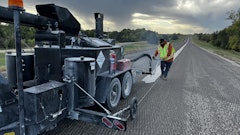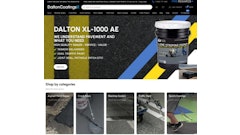
Summer is over and I just put on my favorite corduroy pants. Reaching in the pocket to flatten the wrinkles, I felt some paper, probably an old receipt. I pulled it out and to my surprise it was an old $20 bill.
There probably aren’t $20 bills in my other pants, but I know they are all over your company…hundreds of dollars are hidden in the nooks and crannies of your business, and if you add them up they will multiple into thousands of dollars. Just simple math! It is no secret that even the best-run companies have hidden savings that will increase profits, improve the morale of staff and offer potential benefits to customers.
GETTING RID OF ‘DEAD INVENTORY’
A few years ago, one of my pavement maintenance clients in the Midwest was proudly showing me his warehouse. It was large and impressive, especially for a contractor. When discussing the company financials, I asked him how much inventory dollars were tied-up in the warehouse. He had no idea, but he took a wild guess. He was low!
Upon my recommendation, he segregated the inventory parts and pieces into those that were part of the normal day-to-day business and ones that were not. He had over $90,000 of “dead inventory”! He figured ways to turn dead inventory into cash and credits. He sold off some large items, took a tax deduction for items he scrapped – and believe it or not, his main supplier took a chunk of inventory back!
It was all sitting right in front of him every day, in bins and boxes stacked on shelves. However, the everyday opportunities and challenges contractors face made unusable inventory opaque to him.
What is going on in your business that is right in front of you that could really impact your bottom line? The trick is to allocate time and energy to find significant moneys and productivity gains while still doing what is important for running your business.
Your financial goals and objectives are not necessarily solved by double-digit increases in sales. Think about adding modest growth and focusing on increasing overall profitably by 3-5%. This combination of manageable growth and increased efficiencies is often sustainable for several years. Remember it is not always about how much you sell and perform, but about how much money you make and keep!
I hear the story almost every week and a week in early October was no different. I had just hung up the phone with a regular client that relayed a story of how one of his crews performed work in the wrong area of a retail complex and what would have been a profitable $80,000 project would now be a break-even job.
Now the client is asking questions about adding remote cameras and equipment GPS to better monitor field operations. As I listened to the story, it was obvious that is was a communication problem, which was easily solved with some simple Standard Operating Procedures (SOPs). One procedure could have been having the person who was involved in bidding and selling the job on-site to start it or at least at an in-house preconstruction meeting with the installation team.
FIND AREAS TO CUT WASTE
Do you have solid processes and procedures for all of aspects of your organization? Every business has some waste in time, money and resources. Make it a company-wide commitment to find these areas where improvements can be made, especially those that save money.
You may not be able to correct or improve all that you uncover right away. Therefore, you will have to prioritize what has the most impact on the bottom line. In my opinion, safety should take precedence over everything. They call them accidents because they are usually preventable. Sometimes new initiatives to improve areas such as safety or material handling may have up-front costs, but they will relate to longer-term savings in lowered insurance premiums for worker’s compensation and liability coverage. Not to mention crew synergies and being staffed with the right-sized teams from zero loss workday to accidents.
LOOK AT FIELD OPERATIONS
Field operations is a favorite place to pick up gains in efficiency. Many contractors do not focus on the efficiency of field operations because they are busy with other aspects of the business.
For most pavement maintenance contractors, managing your own crews and subcontractors to greater efficiency will result in better profitability directly related to the project. Believe it or not, this starts in the estimating process because most estimators are making calculations assuming jobs will go perfectly smoothly and not accounting for unknowns and unforeseen issues.
Remember, every job that isn’t profitable – or as profitable as you predicted – is compounded by the loss of revenue from that project and by another potential winner you could have been working on instead. This is often referred to as “the lost opportunity cost.” Think long and hard about “taking the job because you want it.” Losing money on prestigious clients is a win for the buyer and your competitor, not you!
PERFORMANCE MANAGEMENT
The concept of performance management is an approach that rewards team members in all facets of the business with more earnings and/or time off for making contributions that directly affect your increased profits. Let’s pose it as a question: If your team could consistently deliver 5% to 6% more profits, would you be willing to share some of the windfall with them? Your answer should be yes! This is a great way to reward employees, boosting their morale and encouraging some friendly competition within the organization.
One of the most obvious places to save money is unallocated shop time, the time your crews are working around the shop fiddling with equipment, cleaning up stuff and doing general maintenance. How often are three to four people working on a project one or two people can do? Instead of allowing employees to wander from task to task in your yard, create a concise list of things that need to be done and who will do each one. Simply implementing “to-do lists” and SOP checklists allow you to better utilize people.
Let’s look at some obvious field efficiency issues:
- Not having the right material on the jobsite when the crew needs it. Mandate whose job it is to make sure the proper materials are on site. On the rare case when a field member must leave the jobsite to get something, only allow one person to fetch it. Common sense… Spell this out in your procedures.
- Setting guidelines and rules for starting and stopping times is usually a good place to find savings of field labor dollars. There is probably $75 a day of wasted labor time between starting and stopping – maybe even more depending on the size of your company and your number of crews. Multiply this by a modest 225 working days per year, and you could save $16,875 right there! Put checklists in place along with policies and procedures to shore up this dripping of payroll dollars. This is a perfect area to offer performance bonuses to incentivize the workforce, so they are invested in the company and themselves making more money.
There is no difference in working with your subcontractors to orchestrate a tight installation schedule, keeping projects within client’s expectations and allowing your company to complete more projects. If you work with subcontractors, manage how your subs fit in with the overall production schedule and hold them to agreed upon dates. Don’t allow subcontractors to continually take advantage of rescheduling and move the finish line backward.

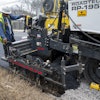

![Lee Boy Facility 2025 17 Use[16]](https://img.forconstructionpros.com/mindful/acbm/workspaces/default/uploads/2025/09/leeboy-facility-2025-17-use16.AbONDzEzbV.jpg?auto=format%2Ccompress&fit=crop&h=100&q=70&w=100)

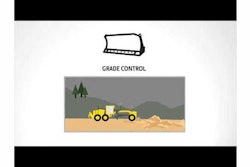
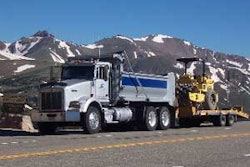
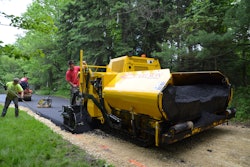

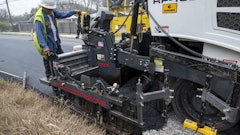


![Lee Boy Facility 2025 17 Use[16]](https://img.forconstructionpros.com/mindful/acbm/workspaces/default/uploads/2025/09/leeboy-facility-2025-17-use16.AbONDzEzbV.jpg?ar=16%3A9&auto=format%2Ccompress&fit=crop&h=135&q=70&w=240)

